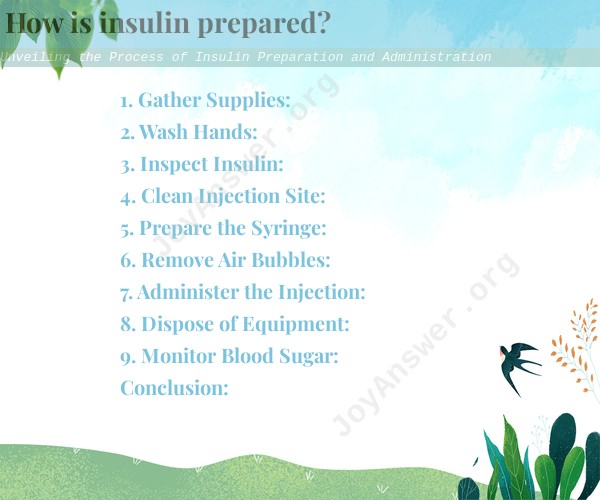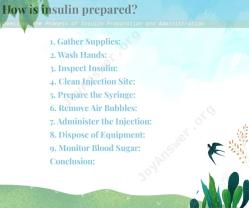How is insulin prepared?
Insulin plays a crucial role in managing diabetes by helping regulate blood sugar levels. Understanding the correct process of insulin preparation and administration is essential for individuals who require insulin therapy. Let's delve into the step-by-step process of preparing and administering insulin:
1. Gather Supplies:
Collect all the necessary supplies, including insulin vial, insulin syringe or pen, alcohol swab, and a sharps disposal container. Make sure you have a clean and well-lit workspace.
2. Wash Hands:
Prior to handling any equipment, thoroughly wash your hands with soap and water to maintain hygiene.
3. Inspect Insulin:
Check the insulin vial for any changes in color, particles, or abnormalities. If you notice anything unusual, do not use the insulin and consult your healthcare provider.
4. Clean Injection Site:
If you're administering subcutaneous insulin, clean the injection site with an alcohol swab and allow it to dry completely.
5. Prepare the Syringe:
If using a syringe, draw air into it equal to the amount of insulin you plan to inject. Inject this air into the insulin vial and then withdraw the correct dose of insulin.
6. Remove Air Bubbles:
Tap the syringe gently to move any air bubbles to the top. Push the plunger slightly to release the bubbles, making sure you have the correct insulin dose in the syringe.
7. Administer the Injection:
Hold the syringe or insulin pen at a 90-degree angle (or as instructed by your healthcare provider) and inject the insulin into the subcutaneous tissue. If using a pen, follow the manufacturer's instructions for proper use.
8. Dispose of Equipment:
Place used syringes or pens in a sharps disposal container to ensure safe disposal. Do not recap needles.
9. Monitor Blood Sugar:
Regularly monitor your blood sugar levels to track the effectiveness of insulin therapy. Consult your healthcare provider if you notice any significant changes.
Conclusion:
Proper insulin preparation and administration are crucial for effectively managing diabetes. Following the step-by-step process outlined above ensures accurate dosing and minimizes the risk of complications. It's essential to receive proper training from a healthcare professional and adhere to their guidance throughout the insulin administration process.








